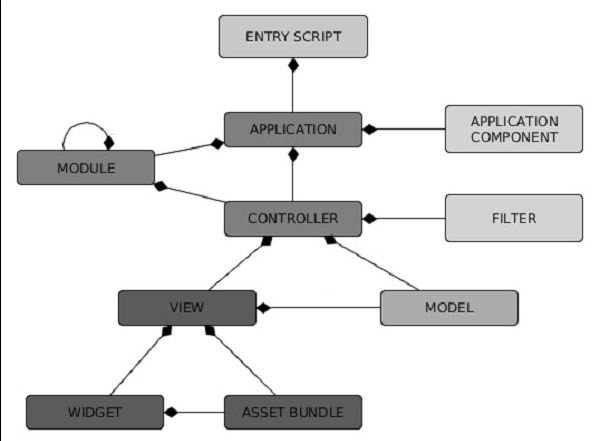Entry scripts in yii2 play a crucial role in Yii2 framework applications as they serve as the entry point for handling incoming requests. In this article, we will explore what entry scripts are, how to create them, and best practices for working with entry scripts in Yii2.

Introduction
Yii2 is a powerful PHP framework known for its performance and extensibility. It follows the MVC (Model-View-Controller) architectural pattern and provides various components and tools to build robust web applications. Entry scripts are an essential part of Yii2 applications as they help in routing and handling incoming requests.
What are Entry Scripts in Yii2?
Entry scripts in Yii2 are PHP files that serve as the entry point for handling web requests. When a user accesses a Yii2 application, the entry script is executed first, and it initializes the necessary configurations, bootstraps the application, and dispatches the request to the appropriate controller and action.
How to Create an Entry Script in Yii2
Creating an entry script in Yii2 involves a few simple steps. Let’s walk through the process:
Setting Up the Directory Structure
To start, ensure that your Yii2 application has a proper directory structure. The recommended structure includes directories for assets, config, controllers, models, views, and web. The entry script will reside in the web directory.
Creating the Entry Script File
Inside the web directory, create a new PHP file, typically named index.php, which will serve as the entry script. You can choose a different name if needed.
Configuring the Entry Script
In the entry script file, you need to configure the necessary components and environment settings. These configurations include defining constants, loading the Composer autoloader, and bootstrapping the Yii2 application.
Understanding the Structure of an Entry Script
To better understand the structure of an entry script, let’s examine the key components involved:
Defining Constants
In the entry script, you define constants that specify the application’s base path, the environment (development, production, etc.), and other important variables. These constants ensure consistent behavior across the application.
Loading Composer Autoloader
Yii2 leverages Composer for package management. The entry script includes code to load the Composer autoloader, which enables the automatic loading of classes and dependencies required by the application.
Bootstrapping the Application
After loading the autoloader, the entry script initializes the Yii2 application by creating an instance of the yii\web\Application class. This class represents the web application and provides various features and configurations.
Handling Requests
Once the application is bootstrapped, the entry script dispatches the incoming request to the appropriate controller and action based on the routing rules defined in the application’s configuration. The controller and action handle the request, process the necessary logic, and generate the response.
Best Practices for Working with Entry Scripts
While working with entry scripts in Yii2, it’s essential to follow best practices to ensure the security and maintainability of your application. Here are some recommendations:
Securing Entry Scripts
To enhance security, it’s crucial to restrict direct access to entry scripts from the web. You can achieve this by configuring your web server (e.g., Apache or Nginx) to deny access to entry scripts or move them outside the web root directory.
Using Environment Variables
Utilizing environment variables in your entry scripts allows for easy configuration management across different environments. You can define environment-specific settings and credentials without hardcoding them in the entry script files.
Conclusion
In Yii2 applications, entry scripts serve as the entry point for handling incoming requests. They initialize the application, configure the necessary components, and dispatch requests to the appropriate controllers and actions. By following best practices and understanding the structure of entry scripts, you can build secure and efficient Yii2 applications.
Frequently Asked Questions (FAQs)
1. What is the purpose of an entry script in Yii2?
The purpose of an entry script in Yii2 is to handle incoming web requests. It initializes the application, configures necessary components, and dispatches request to appropriate controllers and actions.
2. Can I have multiple entry scripts in a Yii2 application?
Yes, you can have multiple entry scripts in a Yii2 application. This allows you to handle different types of requests or implement different configurations based on specific entry points.
3. How can I customize the entry script behavior?
You can customize the behavior of the entry script by modifying the configuration and logic within the script. This includes adjusting routing rules, defining additional constants, or adding custom initialization steps.
4. Are entry scripts specific to web applications only?
Yes, entry scripts are specific to web applications as they handle incoming web requests. For console applications in Yii2, you typically have a separate entry script specifically designed for running command-line tasks.
5. What are some common mistakes to avoid when working with entry scripts?
Some common mistakes to avoid when working with entry scripts include exposing sensitive information in the scripts, not properly securing the entry script files, and forgetting to define necessary constants or configurations for the application to function correctly.